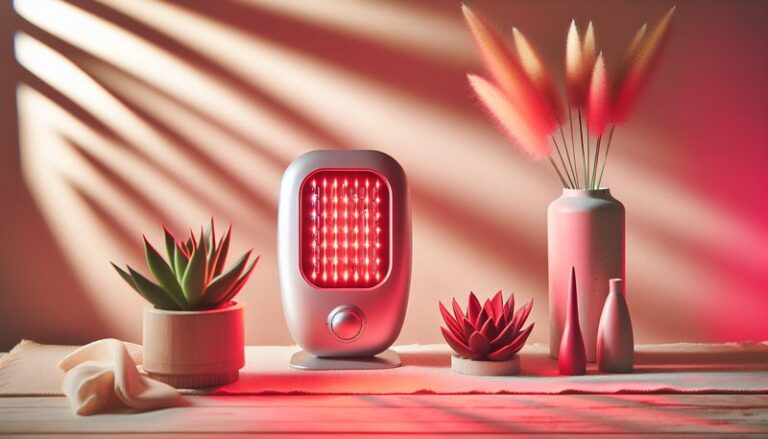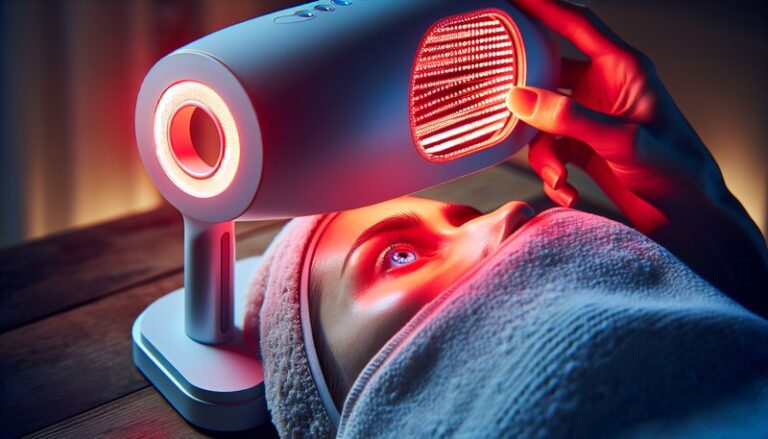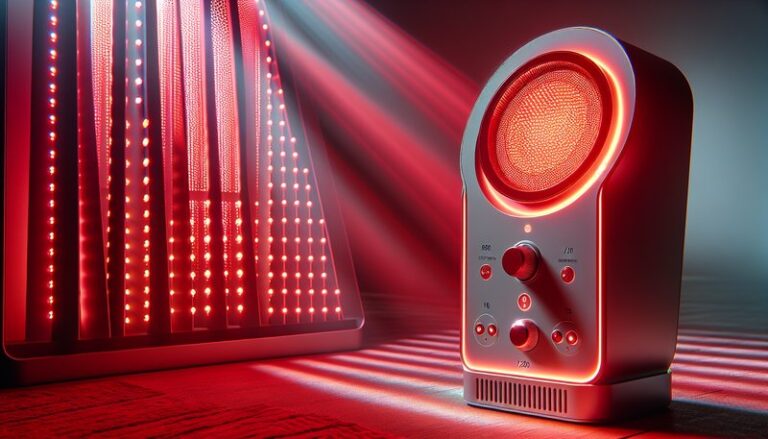What Is Red Light Therapy Mask?
Are you looking for a revolutionary skincare treatment that enhances your beauty routine without the need for invasive procedures?
Red light therapy masks have gained popularity in recent years as a non-invasive solution for improving skin health. In this article, we’ll explore what red light therapy masks are, their benefits, considerations before use, alternatives, and frequently asked questions.
Key Takeaways
- Red light therapy masks use specific wavelengths of light to promote skin healing and rejuvenation.
- Benefits include reducing wrinkles, improving skin texture, and boosting collagen production.
- It’s essential to consider skin type, treatment duration, and device quality before using a red light therapy mask.
What is a Red Light Therapy Mask?
A red light therapy mask is a specialized skincare device designed to emit red and near-infrared light wavelengths onto the skin. This non-invasive treatment harnesses the power of light to stimulate cellular processes, leading to various skin benefits.
Originally developed for medical purposes, red light therapy has transitioned into the cosmetic field, gaining acclaim for its ability to treat a range of skin concerns. The technology involved often includes LED lights that provide consistent and effective wavelengths necessary for optimal skin absorption.
How It Works
Red light penetrates the skin, stimulating the mitochondria within cells. Mitochondria are known as the powerhouse of cells, and their stimulation can enhance energy production, promoting healing and repair. This process can lead to increased collagen and elastin production, ultimately leading to firmer, smoother skin.
What are the Benefits of Red Light Therapy Masks?
Using a red light therapy mask can provide numerous benefits for your skin. The following points will explore these advantages in detail.
Collagen Production Boost
One of the most significant benefits of red light therapy is its ability to boost collagen production. Increased collagen levels can reduce the appearance of fine lines, wrinkles, and sagging skin. Studies have shown that consistent use can yield visible results within weeks.
Improved Skin Texture and Tone
Regular use of a red light therapy mask can improve skin texture and tone, smoothing out rough patches and diminishing hyperpigmentation. The therapy helps to promote an even complexion and can minimize the appearance of pores.
Reduction of Inflammation and Acne
For those struggling with acne, red light therapy masks can reduce inflammation and promote faster healing of breakouts. The therapeutic light targets bacteria and reduces oil production, leading to a significant decrease in acne flare-ups.
Enhanced Wound Healing
Red light therapy can speed up the healing process for cuts, scars, and other wounds by promoting new tissue formation. This makes it an excellent choice for individuals recovering from facial procedures or injuries.
Non-Invasive and Convenient
Unlike many cosmetic treatments, red light therapy masks offer a non-invasive option that can be performed at home. They are easy to use, requiring only a few minutes of your time, and can seamlessly integrate into your skincare routine.
Is it Possible to Use a Red Light Therapy Mask at Home?
Yes, red light therapy masks can be used safely at home, making them a convenient option for skincare enthusiasts. However, it’s essential to use the device according to the manufacturer’s instructions and understand the implications of at-home use.
What are the Advantages of Using a Red Light Therapy Mask at Home?
Using a red light therapy mask at home provides several advantages:
- Cost-Effective: While professional treatments may be expensive, investing in a home device can save money over time.
- Flexible Scheduling: You can incorporate therapy into your routine whenever it suits you, without needing to book appointments.
- Comfort and Privacy: Enjoy the comfort of your home while benefiting from a treatment that many undergo in clinical settings.
What are the Disadvantages of Using a Red Light Therapy Mask at Home?
Despite the advantages, there are also considerations when using these devices at home:
- Learning Curve: Familiarizing yourself with the technology may take time, and achieving optimal results requires commitment.
- Limited Strength: At-home devices may not always deliver the same potency as those available in professional treatments, potentially resulting in slower results.
- Risk of Incorrect Use: Improper use, such as excessive exposure, can result in skin irritation or lessen the treatment’s effectiveness.
What are the Things to Consider Before Using a Red Light Therapy Mask?
Before incorporating a red light therapy mask into your skincare routine, consider the following factors.
Skin Type
Understanding your skin type is crucial to determine if red light therapy is appropriate for you. Those with sensitive skin may need to approach these devices cautiously and begin with shorter sessions.
Duration and Frequency
It’s important to establish a routine that includes the correct duration and frequency of use. Most devices recommend sessions ranging from 10 to 30 minutes several times a week, but this can vary based on your skin goals.
Device Quality
Not all red light therapy masks are created equal. Research and choose a reputable brand, ensuring it emits the appropriate wavelengths (typically between 600 and 650 nanometers for red light).
Existing Skin Conditions
Consult with a dermatologist if you have pre-existing skin conditions or concerns. While many can benefit from red light therapy, it’s essential to ensure it doesn’t exacerbate any underlying issues.
What are the Alternatives to Red Light Therapy Masks?
For those considering other treatment options, several alternatives may offer similar benefits.
Chemical Peels
Chemical peels involve applying a solution to exfoliate the skin, leading to improved texture and tone. They are suitable for various skin concerns, although they can involve downtime.
Microdermabrasion
Microdermabrasion is a non-invasive method of exfoliating dead skin cells to reveal fresh skin beneath. This treatment can enhance skin texture and is often used to address signs of aging.
LED Light Therapy Devices
Similar to red light therapy masks, other LED devices can target specific skin conditions (e.g., blue light for acne). These can offer a range of color wavelengths for various skin issues.
Facial Treatments
Engaging in professional facials can provide tailored skincare remedies, combining various techniques to promote healthy skin, including exfoliation, masks, and hydration.
Read the deep dive Red light therapy duration?
Conclusion: Is it Recommended to Use a Red Light Therapy Mask?
Given the numerous benefits and convenience of red light therapy masks, they are recommended for those seeking improved skin health without invasive measures. However, it is critical to consider individual skin types, device selection, and adherence to recommended usage guidelines to achieve optimal results.
Frequently Asked Questions
How long does it take to see results from a red light therapy mask?
Results can vary, but many users notice improvements in skin texture and tone within 4 to 6 weeks of consistent use.
Can everyone use a red light therapy mask?
Most individuals can use red light therapy masks, but those with certain pre-existing skin conditions should consult a dermatologist before beginning treatment.
How often should I use my red light therapy mask?
Many users find success with sessions 3-5 times per week, lasting between 10 to 30 minutes, depending on the device and personal goals.
Are there any side effects associated with red light therapy masks?
Red light therapy is generally considered safe with minimal side effects, but some individuals may experience temporary redness or warmth in the treated area.
Discover the full analysis Does Red Light Therapy Work?
Do I need to wear eye protection while using a red light therapy mask?
While most masks are designed to be safe for eyes, wearing protective eyewear is advisable to prevent any discomfort from the bright lights.






